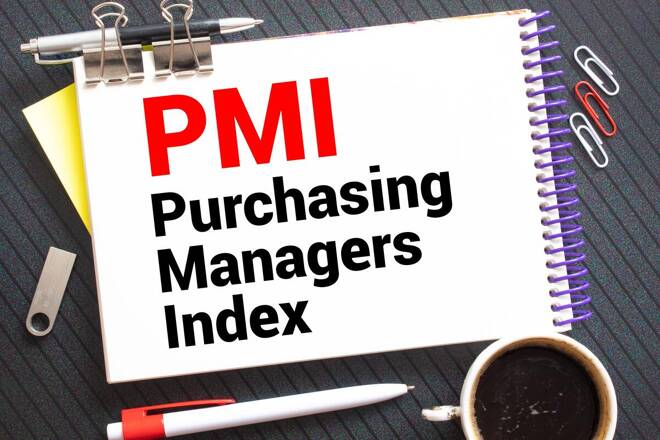Advertisement
Advertisement
Eurozone Service Sector Sees Slower Growth in May
By:
Today's stats raised more red flags, with activity growing at a slower rate. The ECB will have to consider the deteriorating macroeconomic environment.
It was a busy morning on the European economic calendar. German trade data and Services PMI numbers for Italy and Spain and finalized PMIs for France, Germany, and the Eurozone were in focus.
German trade data provided little relief. The German trade surplus widened from €14.9 billion to €18.4 billion. Exports unexpectedly rose 1.2%, while imports fell 1.7% in April.
However, with the euro area manufacturing sector continuing to contract, weaker-than-expected services PMIs from Italy and Spain raised more red flags, particularly with the German economy underperforming.
The Eurozone Services PMI fell from 56.2 to 55.1 in May versus a prelim 55.9. Weaker-than-expected numbers from Italy and Spain and downward revisions to the French and German PMIs were a drag.
According to the Eurozone’s finalized S&P Global Composite PMI survey,
- New business increased at a more marked pace though the growth rate was the slowest since February.
- However, new export sales rose at one of the sharpest rates on record.
- Employment increased further and stood above the long-run averages.
- Despite the increase in employment, backlogs increased for a fourth consecutive month.
- With inflation a bugbear, euro area service providers reported a steep increase in operating costs, though the increase was the least marked since August 2021.
- Nonetheless, prices charged increased at a more marked pace than in April.
- Firms remained optimistic about the year ahead. However, optimism was at its weakest for 2023.
Individual euro area member state PMIs sent mixed signals. Spain’s Services PMI fell from 57.9 to 56.7, with Italy’s falling from 57.6 to 54.0. Economists forecast PMIs of 59.9 and 56.5, respectively.
The French Services PMI fell from 54.6 to 52.5 versus a prelim 52.8. Germany bucked the trend, with the services PMI up from 56.0 to 57.2 versus a prelim 57.8.
As a result of the weaker Services PMIs, the Eurozone Composite PMI fell from 54.1 to 52.8, down from a prelim 53.3.
EUR/USD Reaction to the Eurozone Services PMI
Before today’s PMIs, the EUR/USD rose to an early high of $1.07100 before falling to a pre-stat low of $1.06903.
In response to the stats, the EUR/USD fell from $1.07014 to a post-stat low of $1.06834 before steadying.
This morning, the EUR/USD was down 0.13% to $1.06942.
Next Up
Later this morning, Sentix Investor Confidence and euro area wholesale inflation numbers will also influence ahead of the US session.
With inflationary pressures easing in May, wholesale inflation figures need to signal further softening to support a less hawkish ECB. Economists forecast the Producer Price Index to increase by 5.9% year-over-year in April versus a 5.9% increase in March.
While the economic calendar is busy, investors should monitor central bank chatter throughout the Monday session. ECB President Christine Lagarde is on the calendar to speak today. However, investors should consider commentary with the media in response to the latest round of economic indicators.
Looking ahead to the US session, the all-important ISM Non-Manufacturing PMI for May will be the main report of the day. Investors need to look beyond the headline figure, with employment, new orders, and price sub-components also likely to impact sentiment toward the Fed policy outlook.
Other stats include finalized S&P Global Composite and Services PMIs and factory orders. However, the stats should have a limited impact on the Fed.
Beyond the economic indicators, Fed commentary will need consideration. According to the CME FedWatch Tool, the probability of a June interest rate hike fell from 25.3% to 23.0% this morning. One week earlier, the chance of a 25-basis point hike stood at 64.2%.
About the Author
Bob Masonauthor
With over 28 years of experience in the financial industry, Bob has worked with various global rating agencies and multinational banks. Currently he is covering currencies, commodities, alternative asset classes and global equities, focusing mostly on European and Asian markets.
Advertisement
